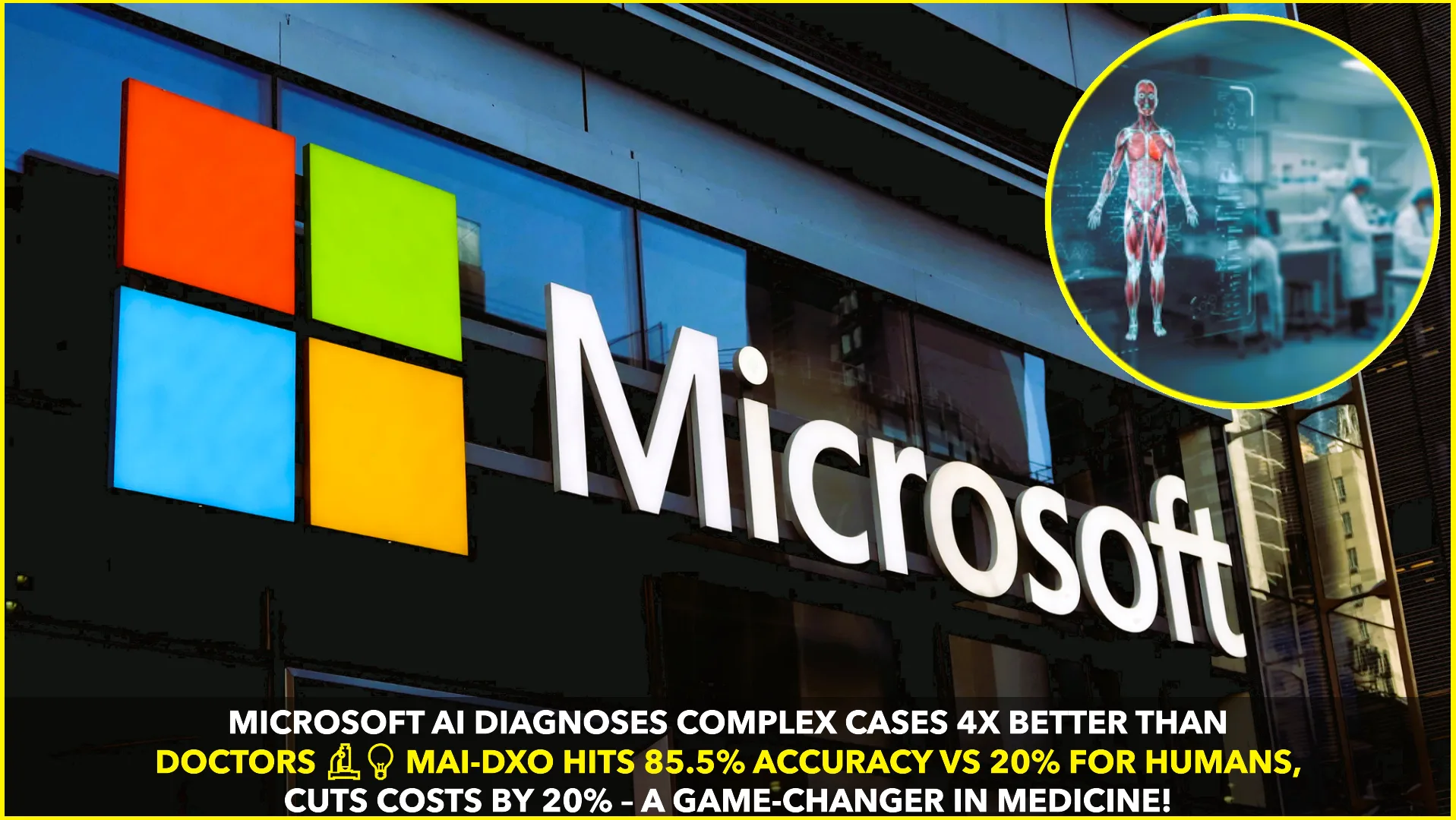In a landmark achievement for artificial intelligence in healthcare, Microsoft has unveiled results showing that its new medical AI system, MAI-DxO, outperforms human doctors in diagnosing complex medical cases. According to a peer-reviewed study recently published and covered by The New York Times and The Guardian, the AI model achieved a staggering 85.5% accuracy in solving challenging cases sourced from the New England Journal of Medicine (NEJM) — considered one of the most rigorous and respected medical publications in the world.
In contrast, human doctors who participated in the study, and were required to work without access to external references or consultation, managed to correctly diagnose only 20% of the same cases. This striking gap has spotlighted the massive potential of AI to reshape diagnostics in clinical settings.
What is MAI-DxO?
MAI-DxO (short for Medical AI – Diagnostic eXpert Optimized) is an advanced large language model (LLM) system developed by Microsoft’s Health Futures team. Unlike general AI models like ChatGPT, MAI-DxO was specifically trained using hundreds of thousands of medical case reports, diagnostic records, and textbooks. Its training included anonymized real-world patient data, allowing it to learn how to synthesize symptoms, medical histories, and lab results into high-probability diagnoses.
The system’s ability to outperform doctors in complex diagnostic scenarios suggests it may be ready for eventual integration into hospitals and clinics to assist in real-time decision-making.
How the Study Was Conducted
The researchers provided MAI-DxO with over 100 difficult diagnostic cases drawn from NEJM’s archive, testing its capacity to mimic real-world medical reasoning. The AI was evaluated on its top-three guesses (also called “differential diagnoses”), and in 85.5% of cases, the correct diagnosis appeared in that list.
On the other hand, a group of practicing physicians were given the same cases under controlled conditions. Without access to tools like search engines, textbooks, or peer collaboration, their diagnostic accuracy dropped to just 20%.
Moreover, MAI-DxO demonstrated remarkable efficiency in recommending diagnostic tests, avoiding unnecessary procedures and reducing projected diagnostic costs by over 20%, according to internal simulations.
Experts React
“This is a clear indication that AI can augment and even outperform human expertise in specific medical domains,” said Dr. Peter Lee, Corporate Vice President at Microsoft Research, who led the study. “But this does not mean we’re replacing doctors — we are giving them superpowers.”
However, the researchers emphasized that MAI-DxO is not yet approved for clinical use, and still needs to undergo regulatory review, safety testing, and validation in live clinical settings.
Dr. Marzyeh Ghassemi, an MIT professor in biomedical AI, noted, “This is exciting progress, but human judgment, empathy, and ethical oversight will always be crucial in medicine. AI should assist, not replace, physicians.”
The Future of AI in Healthcare
The integration of artificial intelligence into healthcare has long promised improved diagnostic accuracy, faster patient triage, and optimized use of medical resources. With MAI-DxO, Microsoft joins a growing list of tech giants like Google and Amazon who are pushing hard into the AI healthcare space.
The implications of this breakthrough could be far-reaching:
- Faster Diagnoses in emergency or resource-limited settings
- Lower healthcare costs via fewer unnecessary tests
- Support for rural or understaffed hospitals
- More consistent patient outcomes
Still, Microsoft researchers caution that further trials, ethical considerations, and physician training must go hand-in-hand with deployment.
As the world watches closely, MAI-DxO could become the next milestone in the convergence of artificial intelligence and human health.
Source:
- The New York Times – “Microsoft’s Medical AI Outperforms Doctors”
- The Guardian – “AI beats doctors in tough diagnostic tests”
- Research summary by Microsoft Health Futures (2025)










